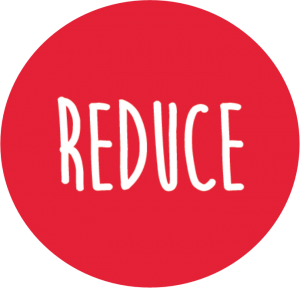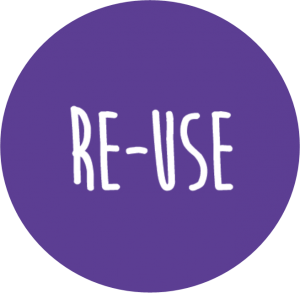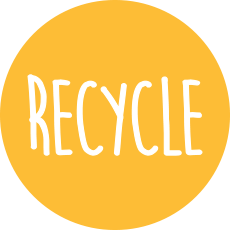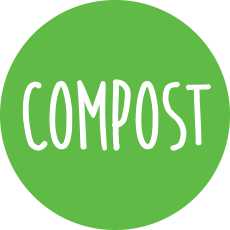Australia’s food waste figures speak for themselves. The Federal Government estimates more than 5.3 million tonnes of edible food is wasted from households and the commercial sector each year.
This costs the Australian economy $20 billion annually. This is not the only cost, food waste causes significant environmental problems. It depletes natural resources, causes deforestation and biodiversity loss, uses energy and water to produce, transport, store and dispose of food that is wasted. When food waste is sent to landfill it rots and releases methane, a harmful greenhouse gas with 21 times the global warming potential of carbon dioxide.
While we are wasting all this food, The United Nations Food and Agriculture Organization(FAO) estimates that about 815 million people of the 7.6 billion people in the world, or 10.7%, were suffering from chronic undernourishment in 2016.
In response, the Federal Government has launched its National Food Waste Strategy, which aims to halve our waste by 2030.
Ronnie Kahn, founder of OzHarvest provides four easy steps we can take to help achieve this goal.
LOOK at what’s in your fridge and pantry before going shopping for more;
BUY only what you need. So make a shopping list;
STORE that food properly, so it doesn’t go off too soon; and,
COOK it and also the leftovers.
Kahn said the most wasted products in the home were bread, milk and leafy greens that go to the bottom of the crisper and turn slimy and mushy.
So let’s “fill bellies not bins”

-
1. AVOID
Avoid food waste by only buying what you need and making sure you eat up what you buy.
As founder of OzHarvest Ronnie Kahn says “Look what you have in your fridge and in your cupboard, buy what you need, store your food properly and cook what you have.”
Plan your meals and prepare a list of the items you need and stick to it.
Avoid the impact of food miles by purchasing locally sourced seasonal food from your local farmer’s market.
Avoid wasting school lunches by involving children more in the selection, preparation and packing of the food they take to school. Ask children to bring home what they do not eat so that you can determine what is not being eaten.
Don’t overfill your fridge and pantry. Keep things tidy and visible so that you can see what you have to avoid buying something you already have.
Use the ‘first in, first out’ principle: After you buy new groceries, move the older products to the front so you consume them first.

-
2. REDUCE
Store food in the right place to make sure they last longer. Food Republic has a fantastic infographic to help you pinpoint where your various foods should go, while Heart.org shows where to put your fruits and veggies to make them last longer.
Reduce stress and time spent cooking by preparing meals in a batch for the rest of the week.
Reduce waste and your waistline by serving smaller food portions. Use smaller plates.
Preserve fruits and vegetables when they are in season by stewing, pickling, dehydrating or making jam.
Freeze fruit and vegetables, as well as left overs for later use. A great idea is freezing lemon juice in ice cube trays for when you need it. Ice cube trays can also be used for freezing fresh herbs by adding chopped herbs to the tray and covering them with olive oil.
Share or swap it. If you have excess produce, offer it to your neighbours, family and friends. A bucket of oranges may even come back as a freshly baked orange cake. Check out Ripe Near Me to find and swap local produce near you.

-
3. REUSE
If there are left-overs eat them! Use reusable containers and label them so you can keep track of how long they’ve been in your fridge or freezer, and incorporate them into your daily or weekly routine.
If you’re eating out, take a re-usable container with you to take home any left over food.
Know the difference between expiry and use by dates. Expiration dates tell us the last day that a product is safe to consume. Best before or use by dates on the other hand, tells us that the food is best consumed before that date. After that date it may just lose its freshness, taste, aroma or nutrients. It does not necessarily mean that the food isn’t safe to eat.
Before you throw away excess food, look into food banks and charities where you can bring items that you are not going to consume before they go bad, and donate them to people in need. Food Bank and OzHarvest collect excess food from restaurants, cafes and supermarkets. You can also donate your unused or unwanted food to them.
Make a stock from vegetable trimmings. Keep any leftover vegetable trimmings like onion skins, leek, carrot, tomato or parsley stalks into a reusable container in the freezer. When you have a small bounty, add them to a large saucepan with a couple of cups of water, salt and pepper and let simmer for an hour or so. Adding chicken or fish bones will improve the flavour. Freeze the stock in 1-2 cup size portions in the freezer for easy use.

-
4. RECYCLE & COMPOST

Use a compost bin or worm farm to compost fruit and vegetable scraps as well as garden materials. Not all food scraps are suitable for home composting. Click here to find out more about home composting and worm farming.
Use compost in your garden to produce your own fruit and vegetables. This will allow you and your family to develop a deeper appreciation for food as well as encourage you to eat seasonal produce.
If you don’t have your own compost bin or worm farm, you can wrap your food scraps in newspaper and place them directly into your green bin.
Use a kitchen caddy/bio basket and compostable bags to collect and store food scraps before placing them in your green bin. Line the basket with a compostable bag or newspaper, then place your food scraps and other compostable items in. Once full, tie the bag and place it into your green lidded food and garden organics bin. Kitchen Caddies and compostable bags are available from most Councils. Ask your local Council if you don’t already have one.
Food scraps along with garden clippings collected in your green lidded bin will be turned into nutrient rich compost. This will then be used to grow more food.
Other resources:
Easy ways to reduce food waste
